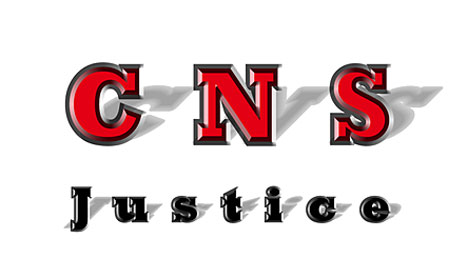COLLEGE PARK – In less than ten minutes, 78 teenagers and young adults cycled through a 7-Eleven and emptied the shelves of candy bars, snacks and drinks. Before police arrived, they were gone.
The “flash rob” in Silver Spring last month was the fifth such mass theft in the Washington, D.C.-area since April, a crime trend defined by large groups of thieves descending on an unsuspecting store and quickly cleaning it out.
The surveillance video of the 7-Eleven in Silver Spring that fell victim to a flash mob theft on Nov. 19. (Credit: Montgomery County Police Department)
Police say the size and speed of the robbery crews make the crimes difficult to combat. Now, retail organizations and legislators in Maryland are pushing to increase penalties for flash robbers.
‘Flash robs’ were named because of their resemblance to flash mobs, where large groups of people use social media to meet in a public place and perform a song or a dance.
“It is not a flash mob, its just organized violence,” said Staci Lawrence, co-founder of Flash Mob America, one of the largest flash mob organizations in the country. “I don’t know how it happened, but we really feel like the name was stolen from us.”
But police say local flash robberies have lacked a key ingredient of flash mobs – they were generally not organized through social media.
The 7-Eleven heist in Silver Spring was not set up through websites like Facebook and Twitter, but “more of the old fashioned way – word of mouth,” said Capt. Paul Starks, spokesman for the Montgomery County Police.
“There may have been texting, but we have indications that some of the people who participated in [the theft] came from a young person’s birthday party,” he said.
Police originally thought a similar mass theft by about 25 people from a 7-Eleven in Germantown in August was organized through social media. But they later learned that the plan was hatched by suspects during conversations at the Montgomery County Fair.
D.C. Police, who have also had to deal with some thefts labeled as flash mob robberies, have had no indication that social media was used in any recent crimes, spokeswoman Gwendolyn Crump said.
Social media may not play a huge role in organizing most mass thefts in the country.
A survey conducted by the National Retail Federation in July found that more than three quarters of the retail companies surveyed said they were victim of mass thefts. However, only 10 percent of those companies reported to being victims of crimes with “flash mob tactics” – those organized through social media — in the past year.
Whether using social media or not, retailers and legislators are looking for harsher penalties for flash robbers.
This map shows the five incidents in the Washington, D.C., area that police or media originally labeled as flash mob thefts or robberies. None of these crimes were organized through social media.
(Credit: Brandon Cooper/Capital News Service)
Del. Jeff Waldstreicher, D-Kensington, plans to introduce a bill during next year’s General Assembly that would charge each member of a flash rob crew with stealing the total value of all the merchandise stolen by the group, rather than what each personally took.
Pat Donoho, president of the Maryland Retailers Association, an organization representing more than 600 retailers in the state, favors the change, which could turn misdemeanor crimes into felonies.
“You have a situation where right now you need to steal $1,000 for it to be a felony,” Donoho said. “If 10 people walk out with $500 individually, that’s not a felony. If they get prosecuted by the total value of all the merchandise stolen, they all could be charged with a felony.”
Still, Donoho said, his organization does not see flash robberies as the most pressing security concern for stores.
“We are not overly concerned about it, but it is a very real phenomenon, for lack of a better term,” he said.
To catch flash robbers, police are turning to social media sites like Facebook, YouTube and Twitter for help.
Montgomery County Police posted security footage from both the mass theft in Germantown and Silver Spring on YouTube to help identify suspects. Starks credited the videos with the arrest of 17 of the suspects from the Germantown crime.
The security footage of the Silver Spring crime had close to 400,000 views on YouTube as of last week.
Aside from using social media to combat flash robberies, Starks said retail managers and employees can protect their stores by calling the police as soon as they suspect a crime is about to occur.
“If you feel uncomfortable, go with your gut,” he said. “Call the police, let us come out, because once it is occurring, folks can dial 911 but there is a given response time and the way these things occur it can end quickly.”

